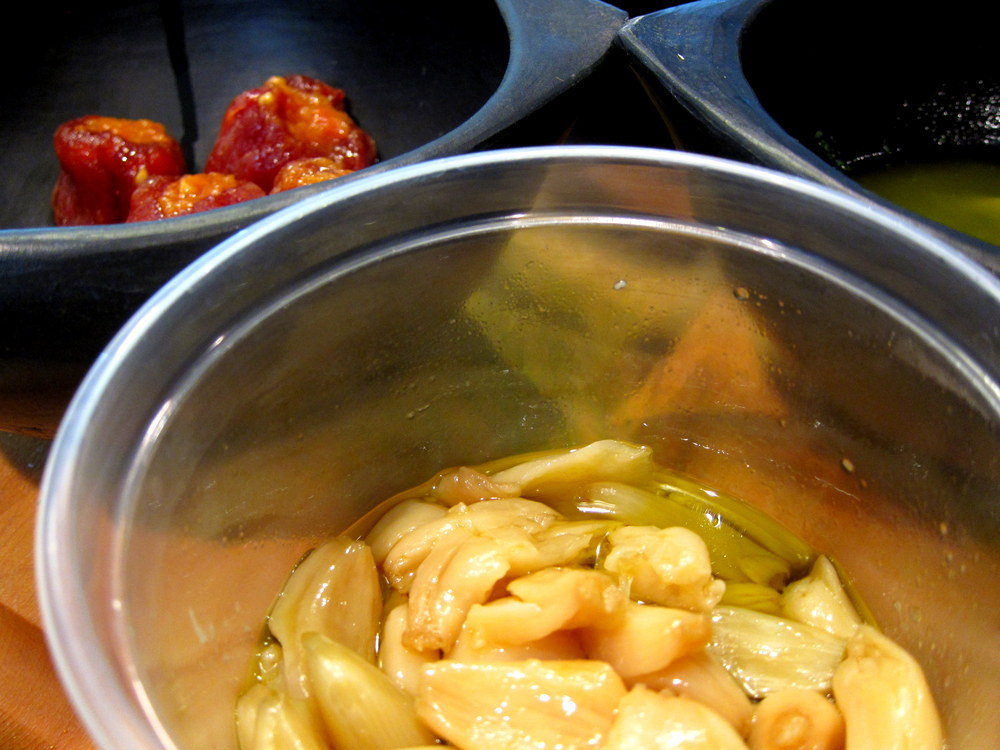Nixtamalization - Wikipedia
"Nixtamalization typically refers to a process for the preparation of maize (corn), or other grain, in which the corn is soaked and cooked in an alkaline solution, usually limewater, washed, and then hulled. This process, originating in Mexico, is famously known to remove up to 97-100% of aflatoxins from mycotoxin contaminated corn. [1] The term can also refer to the removal via an alkali process of the pericarp from other grains such as sorghum."
"
The primary nutritional benefits of nixtamalization arise from the alkaline processing involved. These conditions convert corn's bound niacin to free niacin, making it available for absorption into the body, thus preventing pellagra.[citation needed] Alkalinity also reduces the amount of the protein zein available to the body, which improves the balance among essential amino acids, although the overall amount of protein is reduced.[citation needed]
Secondary benefits can arise from the grain's absorption of minerals from the alkali used or from the vessels used in preparation. These effects can increase calcium (by 750%, with 85% available for absorption), iron, copper, and zinc.[citation needed]
Lastly, nixtamalization significantly reduces (by 90–94%) mycotoxins produced by Fusarium verticillioides and Fusarium proliferatum, molds that commonly infect maize and the toxins of which are putative carcinogens.[citation needed]"
"
Everything You Ever Needed to Know About Nixtamalization But Didn’t Know to Ask
How Did Ancient People Learn to Nixtamalize Their Maize?
This is a question I get asked all the time.
Alkaline cooking is not unique to the Americas. Throughout history, there have been a number of other “independent” inventions of culinary techniques that utilize alkaline substrates. For example, within the Scandinavian culinary tradition, lutefisk, fermented stockfish or salted whitefish, is a centuries old traditional food made by soaking the fish for approximately two weeks in a solution made from water and lye (McGee 2004:231-232). In the Chinese culinary tradition, pidan, or the thousand-year-old-egg, is an egg, typically duck, that has been preserved by coating it in a clay/salt/alkaline mixture (McGee 2004:116). Olives have been and still are routinely cured using lye in order to reduce the amount of time it takes to fix the the extraordinarily bitter phenolic substance oleuropein found within the fruit. In Roman times, olives were traditionally fermented in wood ashes, which successfully cured olives in a matter of hours (McGee 2004:295). And in the present, lye is still routinely used to make pretzels, giving them their characteristic shiny brown finish."
I'm curious about improving the calcium/phosphate ratio of various starchy foods and wonder if nixtamalizing can be done for things like buckwheat, millet, wheat, pasta, even potatoes etc... Any thoughts?
"Nixtamalization typically refers to a process for the preparation of maize (corn), or other grain, in which the corn is soaked and cooked in an alkaline solution, usually limewater, washed, and then hulled. This process, originating in Mexico, is famously known to remove up to 97-100% of aflatoxins from mycotoxin contaminated corn. [1] The term can also refer to the removal via an alkali process of the pericarp from other grains such as sorghum."
"
The primary nutritional benefits of nixtamalization arise from the alkaline processing involved. These conditions convert corn's bound niacin to free niacin, making it available for absorption into the body, thus preventing pellagra.[citation needed] Alkalinity also reduces the amount of the protein zein available to the body, which improves the balance among essential amino acids, although the overall amount of protein is reduced.[citation needed]
Secondary benefits can arise from the grain's absorption of minerals from the alkali used or from the vessels used in preparation. These effects can increase calcium (by 750%, with 85% available for absorption), iron, copper, and zinc.[citation needed]
Lastly, nixtamalization significantly reduces (by 90–94%) mycotoxins produced by Fusarium verticillioides and Fusarium proliferatum, molds that commonly infect maize and the toxins of which are putative carcinogens.[citation needed]"
"
Everything You Ever Needed to Know About Nixtamalization But Didn’t Know to Ask
How Did Ancient People Learn to Nixtamalize Their Maize?
This is a question I get asked all the time.
Alkaline cooking is not unique to the Americas. Throughout history, there have been a number of other “independent” inventions of culinary techniques that utilize alkaline substrates. For example, within the Scandinavian culinary tradition, lutefisk, fermented stockfish or salted whitefish, is a centuries old traditional food made by soaking the fish for approximately two weeks in a solution made from water and lye (McGee 2004:231-232). In the Chinese culinary tradition, pidan, or the thousand-year-old-egg, is an egg, typically duck, that has been preserved by coating it in a clay/salt/alkaline mixture (McGee 2004:116). Olives have been and still are routinely cured using lye in order to reduce the amount of time it takes to fix the the extraordinarily bitter phenolic substance oleuropein found within the fruit. In Roman times, olives were traditionally fermented in wood ashes, which successfully cured olives in a matter of hours (McGee 2004:295). And in the present, lye is still routinely used to make pretzels, giving them their characteristic shiny brown finish."
I'm curious about improving the calcium/phosphate ratio of various starchy foods and wonder if nixtamalizing can be done for things like buckwheat, millet, wheat, pasta, even potatoes etc... Any thoughts?


